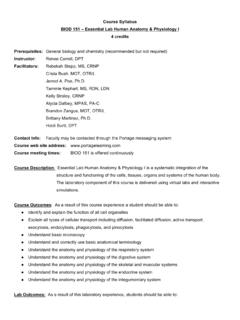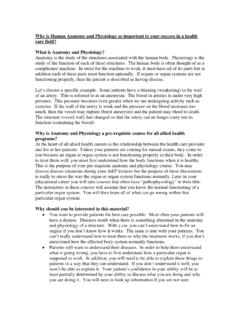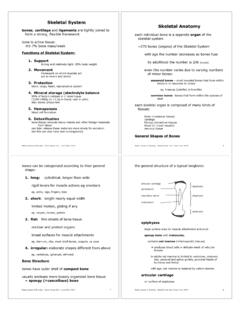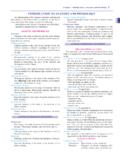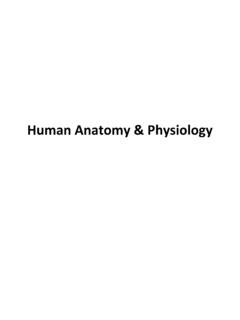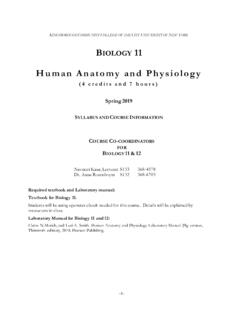Transcription of Course Syllabus BIOD 152 – Essential Lab Human …
1 Course Syllabus biod 152 Essential Lab Human anatomy & physiology II 4 credits Prerequisites: biod 151 Essential Lab Human anatomy & physiology I or equivalent Instructor: Renee Correll, DPT Facilitators: Rebekah Stepp, MS, CRNP Crista Bush, MOT, OTR/L Jerrod A. Poe, Tammie Kephart, MS, RDN, LDN Kelly Straley, CRNP Alycia Dalbey, MPAS, PA-C Brandon Zangus, MOT, OTR/L Brittany Martinez, Heidi Burtt, DPT Contact Info: Faculty may be contacted through the Portage messaging system Course web site address: Course meeting times: biod 152 is offered continuously Course Description: Essential Lab Human anatomy & physiology II is a systematic integration of the structure and functioning of the cells, tissues, organs and systems of the Human body. The laboratory component of this Course is delivered using virtual labs and interactive simulations. Course Outcomes: As a result of this Course experience a student should be able to: Understand the anatomy and physiology of the central and peripheral nervous systems as well as the special senses Understand the anatomy and physiology of the circulatory system Understand the anatomy and physiology of the male and female reproductive systems Understand the anatomy and physiology of the urinary system Understand cell division including mitosis and meiosis Understand Human genetics and heredity Understand in detail the physiology of water balance, electrolyte balance, and acid-base balance Lab Outcomes: As a result of this laboratory experience, students should be able to.
2 Identify major anatomical structures of the central and peripheral nervous systems and understand their function Identify the main anatomical structures of the eye and ear and understand the physiologic processes of hearing and sight Identify the main anatomical structures of the heart and vessels and understand blood flow through the heart, systemic, and pulmonary circuits Understand blood typing Identify the main anatomical structures of the male and female reproductive systems and understand the physiology of reproduction Identify the main anatomical structures of the urinary system and demonstrate understanding of urinalysis Each of these biod 152 student learning outcomes is measured: Directly by: (1) module application problems (with instructor feedback) (2) exams (3) lab reports and lab exams (4) comparison of pre- Course / final exam results Indirectly by an end of Course student-completed evaluation survey Course Delivery: This Course is asynchronously delivered online and is composed of 40 - 50 hours of reviewed module assignments with instructor feedback, 9 contact hours of secure online module exams, 15 20 hours of observation of demonstration labs and maintenance of a lab notebook, and 8 hours of lab exams.
3 It is the policy for all Portage Learning courses that only one exam be completed each day. Research on best practices in learning psychology indicates that time is needed to process material for optimal learning. This means that once an exam has been completed, the next exam will not unlock until the following day. Please plan your time accordingly. If you have a legitimate need for an exception to this policy, please contact your instructor. Required Computer Accessories: It is recommended that students use a desktop or laptop computer, PC or Mac, when taking the Course . Some tablet computers are compatible with the Course , but not all features are available for all tablet computers. The latest full version of Firefox is required for the optimal operation of the Portage Learning Management System. In addition, you must have the latest full version of Adobe Flash Player installed as a plug-in in order to view any of the videos on the site.
4 We highly recommend using a high-speed Internet connection to view the video lectures and labs. You may experience significant difficulties viewing the videos using a dial-up connection. Required readings, lectures and assignments: Portage courses do not use paper textbooks. Students are required to read the online lesson modules written by the Course author which contain the standard information covered in a typical Course . Please note the exam questions are based upon the readings. The practice problems within the modules are not quantitatively part of your final grade, but the module work is a pass/fail component of the Course and will be reviewed for completeness by the instructor. These are not an option or a choice; they are required. This means that you must complete all of the review questions within the modules. Be sure to answer all of the problems in your own words at all times, since this is an important part of adequate preparation for the exams.
5 After you answer the practice problems, compare your answers to the solutions at the end of the module. If your answers do not match those at the end, attempt to figure out why there is a difference. If you have any questions please contact the instructor via the My Messages tab. Required labs and assignments: For the laboratory portion of the Course , students will observe an experienced lab instructor. It is the responsibility of the student to view each lab video in its entirety and only mark the lab as done when it is completed. Do not open all the labs at once; otherwise, they may be reset at the discretion of the instructor. Students are encouraged to keep a lab notebook while watching the videos. The lab notebook, alone, can be used as a resource to the student while taking their lab exam(s). Please note that the use of outside material ( the internet, textbooks, articles, etc.) is not permitted while taking the lab exams.
6 A recommended lab schedule can be found on the home page of each lab; the student should follow this schedule to meet Course objectives. Grading Rubric: 6 Module exams = 100 pts. each x 6 = 600 pts. 8 Lab exams = 30 pts. Each x 8 = 240 pts. Final exam = 120 pts. 120 pts. Total 960 pts. The current Course grade and progress is continuously displayed on the student desktop. Grading Scale: - 100% (860 - 960 pts) = A - (764 - 859 pts) = B - (668 - 763 pts) = C - (572 - 667 pts) = D < (<572 pts) = F Module & Lab Topics Module 1: In this module students are introduced to the central and peripheral nervous systems as well as the autonomic nervous system and its divisions. Content includes a complete overview of the anatomy of the nervous system in its entirety including the special senses. physiology of action potentials and reflexes are covered in-depth. Practical application is included through the overview of common pathology and injury to the nervous system.
7 Module 2: In this module students are introduced to the circulatory system. Content includes an anatomical overview of the heart and surrounding vessels and structures. Students are taught in-depth about the blood flow through the heart, pulmonary, and systemic circuits. In addition, there is an in-depth overview of the physiology of the cardiac cycle including electrical impulses. This module also covers the blood and its composition as well as a complete overview of the anatomy and physiology of the lymphatic system and the study of immunology. Module 3: In this module students are taught a basic overview of sexual reproduction. Content includes a complete anatomical overview of the male and female reproductive systems and an in-depth physiologic study of the differences between the two including oogenesis, spermatogenesis, and menstruation. The stages of pregnancy, labor, and delivery are also covered in-depth.
8 Module 4: In this module students cover cellular division including an in-depth overview of all phases of mitosis, meiosis I and meiosis II. Content also includes a discussion of the structure of DNA and a physiologic overview of the processes of DNA replication, transcription, and translation. Module 5: In this module students cover the urinary system. Content includes a comprehensive overview of the anatomy of all structures within this system including an in-depth study of the kidney, its blood and nervous supply, as well as the physiologic processes of filtration, reabsorption, secretion, and regulation of urine concentration and volume. Module 6: In this module students cover a comprehensive overview of water composition within the body as well as water balance. Content also includes an in-depth discussion of electrolyte balance as well as acid-base balance and chemical reactions that describe each.
9 Practical application includes the discussion of pathology associated with these topics. Lab 1: In this lab students have in-depth instruction on the central and peripheral nervous systems. Content includes discussion of the anatomical structure and function of the four divisions of the brain as well as the spinal cord. Cranial nerves are also discussed with practical application of signs/symptoms should they be damaged. Lab 2: In this lab students have an in-depth review of the anatomy of the eye and ear as well as the physiologic processes of sight and hearing. Lab 3: In this lab students are exposed to microscopic views of various tissues throughout the digestive, endocrine, and reproductive systems. Lab 4: In this lab students have an in-depth study of the anatomy of the heart structure and major vessels. Content includes discussion of the difference between vessels in the systemic and pulmonary circuits as well as blood flow through these circuits.
10 Lab 5: In this lab students review blood flow through the heart and the systemic and pulmonary circuits. Lab 6: In this lab students are introduced to blood types. Content includes a discussion on antigens and antibodies and their function within blood as well as how to determine what blood type a person may have. Practical application includes various case studies. Lab 7: In this lab students have an in-depth overview of the male and female reproductive anatomy . Content includes discussion of male/female sex organs, gametes, hormones, and secondary sex characteristics. Lab 8: In this lab students review in-depth the anatomy and physiology and the kidney and other structures within the urinary tract. Practical application is provided with discussion of normal and abnormal urinary findings as well as a demonstration of urinalysis. Holidays: During the following holidays, all administrative and instructional functions are suspended, including the grading of exams and issuance of transcripts.
